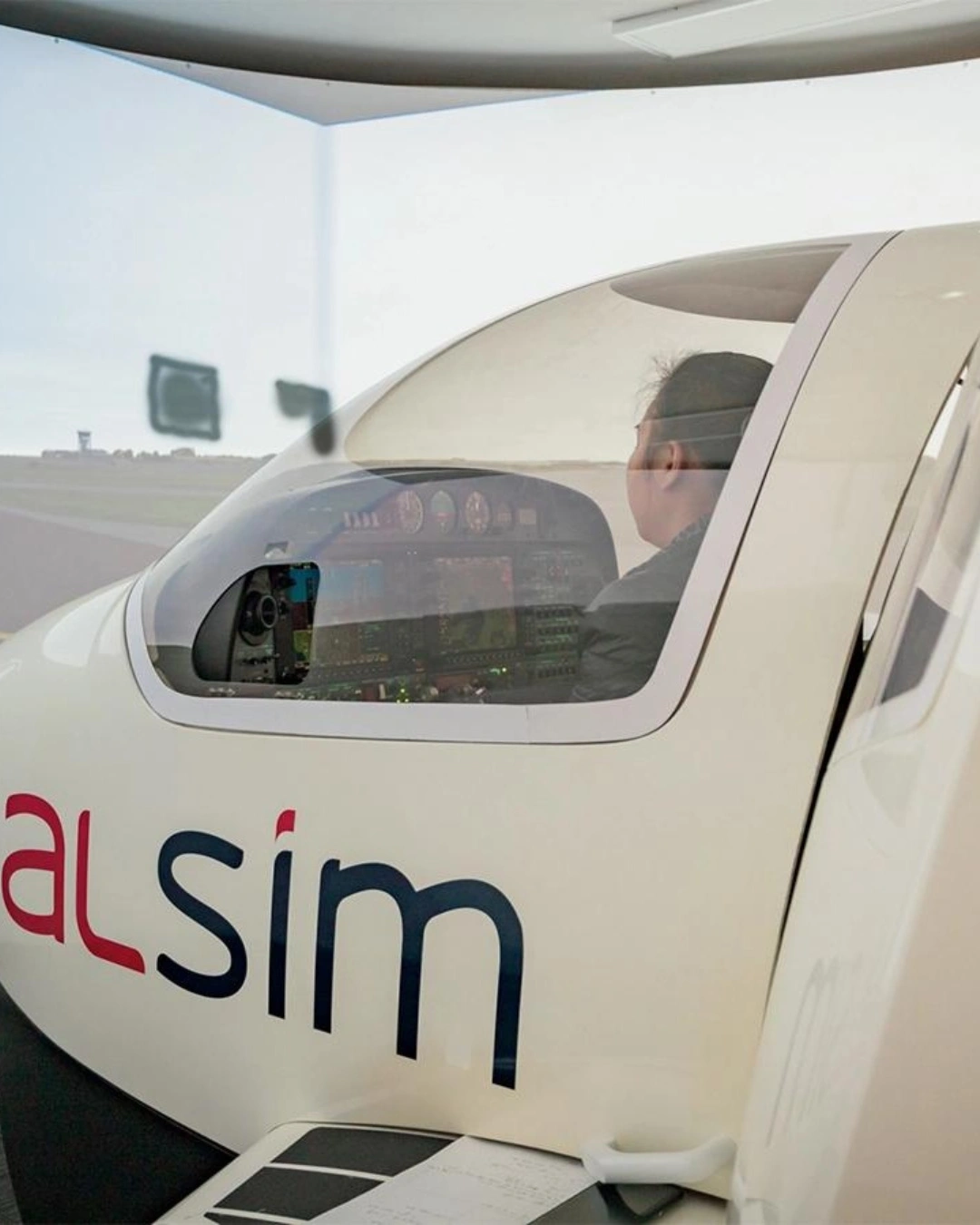
October 23, 2023
The Role of Simulators in Flight Training
Flight simulators have become indispensable tools in the world of aviation training. No matter your particular journey to obtaining a Private Pilot License (PPL) in Australia, you can expect to spend some time in a flight simulator. These advanced devices play a pivotal role in preparing aspiring pilots for the challenges of real-world flying. In this blog post, we’ll delve into the significance of flight simulators. We’ll discover how they function and their evolution and take a look at our own impressive offering of flight simulation experiences.
Understanding Flight Simulators
What is a Flight Simulator?
A flight simulator is a sophisticated training device that replicates the experience of flying an aircraft in safe, controlled environments. It combines cutting-edge technology, realistic controls, and high-fidelity visual systems to create an immersive flight experience for pilots-in-training.
How Flight Simulators Function
Flight simulators operate by mimicking the physics, aerodynamics, and handling characteristics of actual, specific aircraft. They feature replica cockpits with authentic controls, including yokes, pedals, and instrument panels. Visual systems project realistic scenery to simulate flying conditions, while software algorithms calculate and replicate the aircraft’s response to pilot inputs.
The Evolution of Flight Simulators
The history of flight simulators dates back to the early 20th century, with rudimentary devices used to train military aviators. Over the decades, they have evolved into highly sophisticated tools for pilot training. Key milestones in their development include:
- 1920s: The Link Trainer, invented by Edwin Link, marked the birth of the modern flight simulator. An ingenious invention, the Link Trainer connected control inputs to mechanically operated pneumatic devices that allowed a student to ‘fly’ the simulator without the use of computers or electronics. It was widely used throughout the world’s militaries for basic instrument training.
- 1960s: The advent of digital computers allowed for more realistic flight simulation. Simulators began to replicate various aircraft types and weather conditions. This allowed for a more complete training experience specific to certain aircraft types.
- 1980s: Full-motion simulators with hydraulic systems were introduced, providing a more authentic flight experience. As avionics improved into the digital age, simulators began to reflect these changes as well.
- Present Day: Modern flight simulators boast high-resolution visuals, advanced avionics, and realistic flight dynamics, making them invaluable in pilot training. With the advent of Virtual Reality (VR) and Artificial Intelligence (AI), further advancements are expected to be made in the coming years.
Learn To Fly’s Flight Simulator Offerings
When pursuing your PPL with Learn To Fly in Australia, you’ll discover that flight simulation forms an integral part of our innovative and cost-effective integrated flight training model. Here’s a glimpse of their impressive simulator fleet:
1. Alsim AL42 (Diamond DA42) and TRC472 (Cessna 172) Full Cockpit Synthetic Trainers
These state-of-the-art simulators replicate the cockpits of popular aircraft models, the Diamond DA42 and Cessna 172. They provide a realistic and immersive training experience, allowing you to practice procedures, navigation, and emergency scenarios in a controlled environment.
2. X-Plane Simulator
Learn To Fly’s X-Plane simulator is a cutting-edge training tool equipped with Garmin avionics, offering hands-on experience with real-world cockpit instrumentation. The Virtual-Fly controls provide tactile feedback, enhancing the realism of your training sessions.
3. B737-800 Simulator (Partnered with Flight Experience Melbourne)
For those aspiring to become airline pilots, Learn To Fly has teamed up with Flight Experience Melbourne to offer training in their Boeing-endorsed B737-800 simulator. This partnership provides a unique opportunity to familiarize yourself with the type of aircraft used in commercial aviation.
The Advantages of Flight Simulation in Private Pilot License Training
Flight simulation provides a wide range of benefits for student pilots obtaining their Private Pilot License and beyond.
Enhanced Safety
Flight simulators offer a risk-free environment for practising manoeuvres, emergency procedures, and adverse weather conditions, reducing the safety risks associated with in-air flight training.
Cost-Effective Training
Simulator training can be more cost-effective than traditional flight training, as it minimizes fuel and maintenance expenses while maximizing training hours.
Versatile Learning
Simulators can replicate various scenarios, allowing you to practice day and night operations, cross-country navigation, and complex procedures without leaving the ground.
Elevate Your Training with Flight Simulators
Flight simulators are invaluable assets in the journey to obtain a Private Pilot License in Australia. They provide aspiring pilots with the opportunity to hone their skills, build confidence, and enhance their knowledge in a controlled and immersive environment. Learn To Fly’s cutting-edge simulator fleet, including the Alsim AL42, TRC472, X-Plane simulator, and B737-800 simulator, ensures that you receive world-class training that prepares you for the challenges of real-world aviation.
So, if you’re ready to take your first step towards the skies and explore the world of aviation, embrace the power of flight simulation with Learn To Fly. The future of your flying career is just a simulator session away!
What Else Is Worth Consideration?
As well as the financial implications, it’s important to make sure you’re well-informed before you undertake your CPL flight training. Here are some other topics that are worth exploring to help you achieve your aviation goals:
- FAQs About Obtaining Your Commercial Pilot Licence
Find answers to the most commonly asked questions from former CPL students.
The Benefits of Online Flight Training Courses
Read about saving by completing your aviation theory online.
Flight Schools in Australia – How Do I Choose the Right One?
Make sure you’re choosing the best flight school to achieve your aviation dreams.
Aspiring Career Pilots – Here’s Why You need a Diploma of Aviation
If you’re looking to fly commercially, this is a great place to learn about course options.- How to Become an Airline Pilot in Australia
Understand the pathways and career options for commercial pilots operating in Australia.
Chat to one of our flight training specialists to get your pilot training off the ground. Email [email protected] or go to https://drift.me/learntofly/meeting to book a meeting and school tour.









